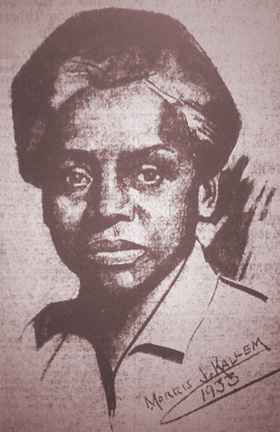Williana Burroughs facts for kids
Williana "Liana" Jones Burroughs (January 2, 1882 – December 24, 1945) was an American teacher and a brave political activist. She was also a politician. Many people remember her as one of the first women to run for an elected job in New York.
Contents
Williana Burroughs: A Life of Activism
Early Life and Education
Williana Jones, known as "Liane," was born on January 2, 1882. Her birthplace was Petersburg, Virginia. Her mother had been a slave for 16 years. Williana's father died when she was only four years old.
Her mother moved to New York City after her father passed away. She brought Williana, her sister, and her brother Gordon. Her mother worked as a cook. However, she could not care for her children well enough. Williana spent seven years in the Colored Orphan Asylum. This orphanage was in Harlem. Williana was 11 when her mother finally brought her and her siblings home.
Williana went to public school in New York. She was a very good student. In 1909, Williana Jones married Charles Burroughs. He was a postal worker and an actor. After high school, she went to New York City Normal College. Today, this school is called Hunter College. She earned her teaching degree there. In 1910, she started her first teaching job. She taught first grade.
In 1926, Burroughs moved to P.S. 48 in Queens, New York. She taught first and second graders there. Soon, she joined the New York City Teachers Union. She was an active member of a group called the "Rank and File caucus."
Standing Up for What's Right
Williana Burroughs joined the Communist Party USA in September 1926. She became very active in helping others. She worked to defend the Scottsboro boys. She also led a group that helped Isidore Blumberg. He was a teacher who lost his job because of his political beliefs.
In the summer of 1928, the Communist Party sent Burroughs to Moscow. She went to a big meeting called the 6th World Congress of the Comintern. She represented a group called the American Negro Labor Congress. Burroughs traveled with her husband and her two youngest sons. Her sons stayed in the Soviet Union to go to school. She did not see them again until 1937.
Burroughs used the name "Mary Adams" for some of her work. She wrote an article for the party's newspaper under this name in 1928. She became important in the party. In March 1929, she was chosen as a delegate for a big party meeting.
A Voice for Change
Burroughs returned to the United States in January 1931. She started teaching again. In 1933, Burroughs spoke out at a meeting of the New York City Board of Education. In June 1933, she was fired from her teaching job. They said it was for "conduct unbecoming to a teacher." This meant they did not like her political actions.
After losing her teaching job, Burroughs ran for public office. She was the Communist Party's candidate for New York Comptroller in 1933. She also ran for Lieutenant Governor of New York in 1934. From 1933 to 1934, she also ran the Harlem Worker's School.
Burroughs was a strong speaker. She was one of the most helpful witnesses during the public hearings. These hearings were about the Harlem riot of 1935.
In the spring of 1937, she went back to the Soviet Union. This was during a difficult time there. She worked for Radio Moscow. This was a news service for the Soviet government. She announced and edited English-language broadcasts. Burroughs stayed in Moscow for most of her life. In 1940, she asked to return to the United States with her sons. But she was asked to stay because there were not many Americans left to do her job. World War II kept her and her sons in Moscow until 1945. Finally, she returned to New York with her younger son.
Later Years and Legacy
Williana Jones Burroughs died on December 24, 1945. She passed away at her friend Hermie Huiswoud's home in Manhattan. This was just two months after she came back to the United States. It was also barely a week before her 64th birthday.
Her oldest son, Charles Burroughs, had stayed in Moscow. He kept his American citizenship. He joined the United States Army in 1945. After his military service, he returned to the United States. In 1961, he helped start the DuSable Museum of African American History in Chicago. He was the curator there until 1980. A high school in Chicago is named after him.
Williana's granddaughter, Carola Burroughs, was interviewed for a documentary. It was called Black Russians - The Red Experience. This film was about African-Americans who moved to the Soviet Union.
See also


